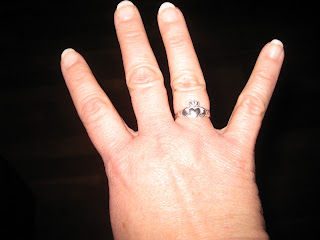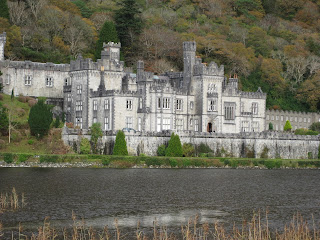Today is Gaudete Sunday, the third Sunday of Advent. Two purple candles and one pink candle burn brightly on the Advent wreath. Gaudete is Latin for “rejoice.” Christmas nears!
At St. Augustine’s this morning, we celebrated the “Mass of Giving.” Parishioners brought gifts that corresponded to the needs marked on cards and hung on the Giving Tree. I was deeply moved as I watched the children of the parish present these gifts during the offertory. Some of the gifts were wrapped in bright paper, but I could make out a large number of warm comforters. People are cold.
As a person who appears to have received the gift of an overabundance of empathy, I find the suffering of my fellow human beings difficult to contemplate. Rejoice! Indeed.
I am sure the readers of this blog know that Ireland finds itself in financial crisis. The crisis jolted the country out of what have been called the “Celtic Tiger” years—years of massive job growth and rising standard of living. Ireland entered a severe recession in 2008.
There are definite parallels between the Irish and the United States fiscal crises. For example, both countries experienced a housing boom and then bust. However, housing prices rose even higher in Ireland than they did in the US, which means house prices in Ireland had further to fall. I’m sure I can afford my apartment on Galway Bay because the price dropped considerably due to the crisis. Both the United State and Ireland bailed out failing banks. Unlike in the United States, the Irish banks have not made a strong comeback. According to the NPR Planet Money website, this difference can be attributed to the fact that the Irish banks were in far worse trouble than the US banks and the Irish banks represented a much bigger portion of the Irish economy than the US banks did in the United States.
As you must imagine, the financial crisis looms large in public and private life these days. As Ireland copes with a bailout by the European Union and the International Monetary Fund, the Irish people contemplate the consequences for the future. What will happen to education? Health care? What troubles will today’s children inherit tomorrow? I have also heard some Irish comment that the bailout is a slap in the face to those who gave up their lives to ensure Irish independence. Others believe that sentiment is overstated, but, understandably, emotions run high.
I read an article by Louise East in yesterday’s Irish Times. East found herself at an Advent party in Germany and wondered how people would react when they discovered she was from Ireland. No one reacted at all. Curious, East asked a man at the party how Germany was reacting to the Irish bailout. The man replied that he believed most Germans trust their leaders to deal with the situation and handle their money carefully. East writes, “Imagine happily entrusting matters of national economic interest to paid public servants, leaving you free to ‘not really think about’ the outcome.” Yes, imagine…
Despite the grim economy, I take the message of Gaudete Sunday to heart. I rejoice. I rejoice that, despite these difficult times, people are willing to reach out to ease the suffering of others. I rejoice that the children and adults at today’s mass experienced a concrete manifestation of love of neighbor. I rejoice that this is a season of hope. Though the days are short and darkness deep, the light will return. Rejoice! Indeed.
 |
| A public voice |
 |
| The Church in the conversation |
 |
| A protest yesterday afternoon |

























































